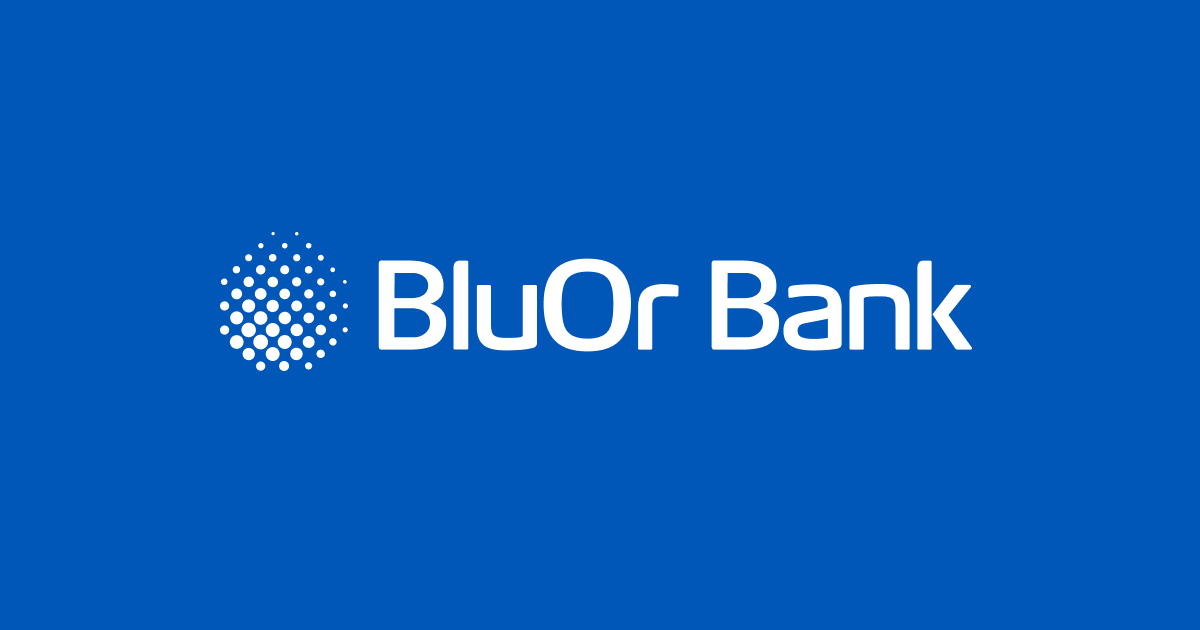Explore web search results related to this domain and discover relevant information.
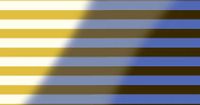
Our perception of color depends on interpreting the amount of light in a room or scene.
Our perception of color depends on interpreting the amount of light in a room or scene. When cues about the ambient light are missing, people may perceive the same color in different ways. Related Article ... Some people see a white and gold dress in dark shadow. Some people see a blue and black dress washed out in bright light.Or is the whole room bright and all the colors are washed out? Different people may pick up on different visual cues in the image, which can change how they interpret and name the colors. ... If you think the dress is in shadow, your brain may remove the blue cast and perceive the dress as being white and gold.If the photograph showed more of the room, or if skin tones were visible, there might have been more clues about the ambient light. If you think the dress is being washed out by bright light, your brain may perceive the dress as a darker blue and black.If the photograph showed more of the room, or if skin tones were visible, there might have been more clues about the ambient light. ... If you think the dress is being washed out by bright light, your brain may perceive the dress as a darker blue and black.

Since the 1970s, as campaign branding ... largely been blue (though so, too, have the majority of the Democrats’ logos). At an election night event at Republican headquarters in Washington DC in 1984, a huge map was erected on the back wall, where organizers ripped away green ...
Since the 1970s, as campaign branding became more sophisticated, the Republicans’ logos have largely been blue (though so, too, have the majority of the Democrats’ logos). At an election night event at Republican headquarters in Washington DC in 1984, a huge map was erected on the back wall, where organizers ripped away green covers from each state to reveal sparkly blue fabric for the 49 states that announced for Reagan.Internationally, blue is often linked with wealth and conservatism, having historically been the most expensive color to produce. Red, meanwhile, has long been associated with radicalism. Like the blood of workers rising against their oppressors, red features on the flags, logos and ensigns of left-leaning political organizations, from radical communists (think “Red China”) to the social democratic parties of Western Europe, Canada and Australia.And while it is plausible the Democrats had been unhappy about being associated with a color carrying negative, McCarthyist connotations (the anti-communist “Red Scare” will have been fresher in the memory in the years after the Cold War), there is similarly no evidence that networks deemed the association unfair, or that the party lobbied them to change. If TV stations were broadly aligned by 1996, print media outlets still played by their own rules. Time magazine reported that year’s result with a map showing Bill Clinton as red and Dole as blue, while the Washington Post’s 2000 election front page also featured a color map marking Democrats as red.A "Vote Blue" T-shirt seen at a Philadelphia Democratic campaign rally in September 2018. ... From there, the color associations became shorthand for ideological positions. Declaring a state, county or individual voter as “red” or “blue” became a helpful way of framing political discussions, reflecting the USA’s de facto two-party structure and its all-or nothing, first-past-the-post voting system in which states are either Democrat or Republican, regardless of how close the result is.
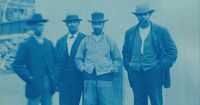
Though almost 200 pages shorter, “Black in Blues” ranges even more widely, from the Middle Ages, when the English called dark-skinned people “blew,” or blue; to the blue-green tiger sharks of the Middle Passage; to the toxic cobalt, mostly from Congo, that powers her computer.
Imani Perry’s impressionistic “Black in Blues” finds shades of meaning — beautiful and ugly — in art, artifacts, music, fashion and more.Blue is humanity’s favorite color, and no wonder. It’s everywhere: the sky, the sea that makes our earth resemble a Big Blue Marble, the internet (That Dress; “I’m looking for a man in finance/trust fund/6’5 “/blue eyes”).It is also, as Imani Perry illuminates in a new book that swirls and flicks like an actual marble, a color inextricable from the Black race. Most clearly in the blues, the genre of music that evolved from spirituals and work songs and was quickly seized upon by a growing mass market, “made of sheets of sound, layered and unstable, that could make you feel much more than words,” as she writes.Reading “Black in Blues” is like putting on a pair of those special Kodak 3-D viewfinders that make objects and issues leap suddenly into focus. Periwinkle laid on otherwise unmarked graves. The turquoise of lethal menthol cigarette packaging. The background of flags symbolizing freedoms unfairly distributed.
10 votes, 19 comments. 10K subscribers in the colors community. “Mere color, unspoiled by meaning, and unallied with definite form, can speak to the soul in a thousand different ways. ” ― Oscar Wilde
I'm guessing 80% Blue 20% Red, which is 60% Blue 40% Purple. Conclusion: this color is marginally more blue than purple. Second Conclusion: This color is Indigo as stated by others here because it is on the edge of purple and blue. ... Dedicated sub for the Warhammer 40K Orks army faction.I've always hated the color blue... ... the official twenty one pilots subreddit |-/ — stay strong. live on. pass on these songs. ... A community for everyone who wants to know their eye colour, help others with the same, or just show off their beautiful eyes and eye make up looks.Coloured contacts to match an outfit or theme, we want to see it here! All contributions welcome, remember kindness is number 1! Eyes, after all, are the windows to the soul. ... What color is this? Indigo and violet tend to lean more purple, I want people to know exactly what I mean when I say this color. A dark shade right in between blue and purple.Join us to discuss news, deckbuilding, strategies, card art, tournaments, or anything else involving the One Piece Card Game. ... “Mere color, unspoiled by meaning, and unallied with definite form, can speak to the soul in a thousand different ways. ” ― Oscar Wilde ... Discussions, tips, and tricks for using Airwraps and similar styling tools! ... This color is Blue mixed with white but looks purple.

You don't have to wing it with cheap flights. JetBlue gives you low fares with the most legroom in coach, free wi-fi, free live TV & movies, and more. Book now.
YInMn Blue, or "MasBlue" as it is commonly referred to at Oregon State University, is a serendipitous discovery of a bright blue pigment by scientists led by Mas Subramanian at OSU while researching materials for electronics applications.
By measuring the spectral properties of this series, it was found that YIn1-xMnxO3 exhibits high absorbance in the UV region and high reflectivity in the near-infrared region when compared to currently-used Cobalt Blue pigments. In May 2012, the Subramanian team received a patent with the U.S. Patent Office for the new pigment (US82822728). Shepherd Color Co. subsequently entered into a non-disclosure agreement with Oregon State and began rigorous testing of the pigment.The excitement of discovering a brilliant blue, heat reflecting, thermally stable, and UV absorbing pigment did not stop them from exploring beyond the blues. Since then, Subramanian and his team have expanded their research and have made a range of new pigments to include almost every color, from bright oranges to shades of purple, turquoise and green.In 2009, graduate student Andrew Smith was exploring the electronic properties of manganese oxide by heating it to approximately 1200 °C (~2000 °F). Instead of a new, high-efficiency electronic material, what emerged from the furnace was a brilliant blue compound - a blue that Subramanian knew immediately was a research breakthrough.Available on Amazon: Blue: In Search of Nature's Rarest Color by Kai Kupferschmidt – A globe-trotting quest to find blue in the natural world—and to understand our collective obsession with this captivating color.

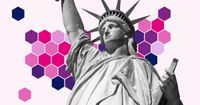
In the last ten elections, 41 states voted for the same party eight times or more.
In American political discourse, states are often labeled “red” for leaning towards Republican politics or “blue” for leaning Democratic.In the last ten elections, 41 states voted for the same party eight times or more.Updated March 27, 2025 by the USAFacts teamAcross the aisle, 2024’s bluest states by presidential voting margin were Vermont (with a margin of victory of +32 percentage points), Maryland (+29), Massachusetts (+25), Hawaii (+23), and California (+20).Voters in most states stick with presidential candidates from one party: In the 10 presidential elections held since 1988, 41 states stuck with candidates from the same party eight times or more.

The jobs most likely to be displaced by artificial intelligence fit the profile of the college-educated elite who are backing the Democratic Party.
The Republican base has grown more working-class, more rural or exurban, and concentrated in the skilled trades. In short, the jobs that AI is poised to displace are concentrated in the Democratic coalition, while the jobs still untouched by AI are clustered in the Republican one. The implication? AI disruption may accelerate the realignment – replacing jobs in industries that overwhelmingly vote blue while leaving red-leaning jobs largely untouched.For policymakers, the challenge is twofold: they should provide soft landings for those being displaced while ensuring our educational system is producing enough workers with the necessary blue-collar skills to usher in the economy of the future. During the era of globalization, policymakers demonstrated they either did not care or could not help the millions of displaced industrial workers who anchored the American middle class.ZeroHedge - On a long enough timeline, the survival rate for everyone drops to zeroThe jobs least likely to be displaced are the blue-collar workers who are building the new Republican majority. These jobs include highway maintenance workers, cement masons, painters, and truck drivers.
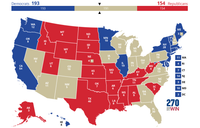
All but 10 states1 1Plus one ... Democratic or Republican for (at least) the prior four consecutive presidential elections. For the GOP, this represented 179 electoral votes. The Democratic states, comprising 242 electoral votes had all actually gone blue since 1992 - six ...
All but 10 states1 1Plus one congressional district in Nebraska had voted consistently Democratic or Republican for (at least) the prior four consecutive presidential elections. For the GOP, this represented 179 electoral votes. The Democratic states, comprising 242 electoral votes had all actually gone blue since 1992 - six straight elections.To win in 2016, Donald Trump broke through some of the 'blue wall' of 242 electoral votes that had voted Democratic in each presidential election since at least 1992. Pennsylvania, Michigan, Wisconsin and one district in Maine voted Republican in 2016. · In 2020, Joe Biden won Georgia and Arizona, states that had last voted Democratic in 1992 and 1996, respectively. · All five of the aforementioned states were decided by 1% or less in the year (2016 or 2020) they came off this map.States voting consistently for the Democrat or Republican party in presidential election since at least 2000Note that the next image reflects the electoral map as of 2024. Had there been no changes, Democrats would have 195, Republicans 152. To see what's changed, click the image. On the resulting URL, usee the '2020' or 'Change' buttons above the map
In American political discourse, states are often labeled “red” for leaning towards Republican politics or “blue” for leaning Democratic.
In American political discourse, states are often labeled “red” for leaning towards Republican politics or “blue” for leaning Democratic.In the last ten elections, 41 states voted for the same party eight times or more.Updated March 27, 2025 by the USAFacts teamAcross the aisle, 2024’s bluest states by presidential voting margin were Vermont (with a margin of victory of +32 percentage points), Maryland (+29), Massachusetts (+25), Hawaii (+23), and California (+20).Voters in most states stick with presidential candidates from one party: In the 10 presidential elections held since 1988, 41 states stuck with candidates from the same party eight times or more.
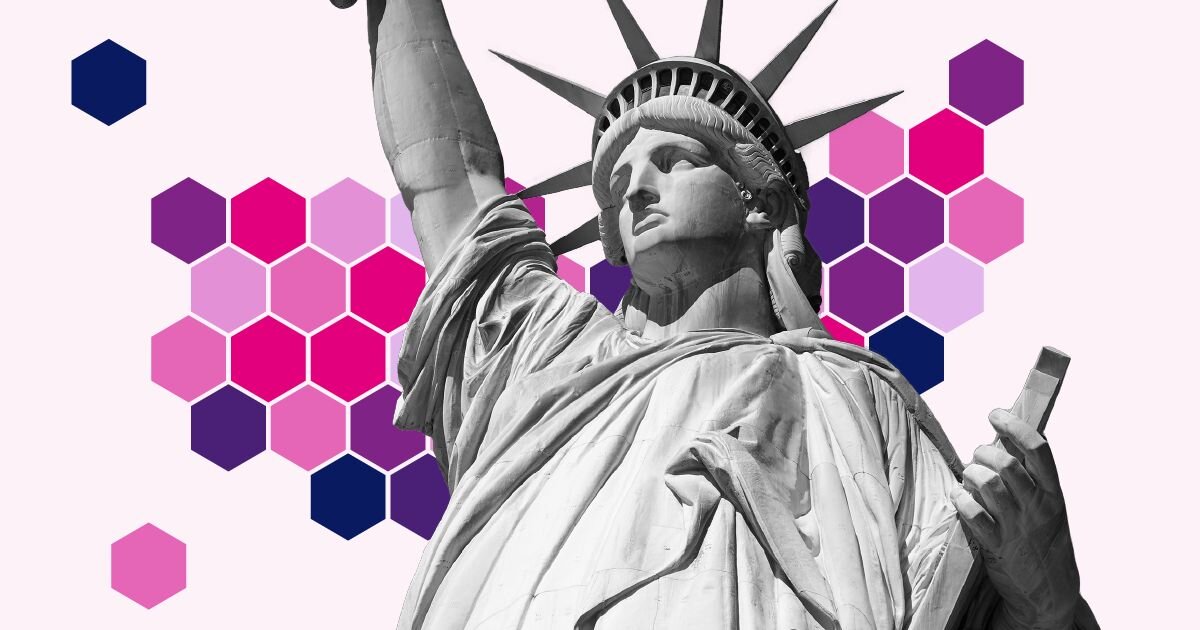
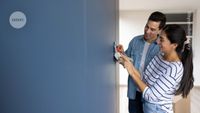
A machine-learning tool can predict what colour a person is looking at when trained on the brain activity of others.
A machine-learning tool can predict what colour a person is looking at when trained on the brain activity of others. A machine-learning tool can predict what colour a person is looking at when trained on the brain activity of others.Nature - A machine-learning tool can predict what colour a person is looking at when trained on the brain activity of others.Thank you for visiting nature.com. You are using a browser version with limited support for CSS. To obtain the best experience, we recommend you use a more up to date browser (or turn off compatibility mode in Internet Explorer).Bannert, M. M. & Bartels, A. J. Neurosci. https://doi.org/10.1523/jneurosci.2717-20.2025 (2025)
53 votes, 147 comments. None of my friends can agree on what colour this is, half say blue have say green, now obviously it’s teal but we are saying…
None of my friends can agree on what colour this is, half say blue have say green, now obviously it’s teal but we are saying what does it lean towards, green or blue, we even asked AI and chat gpt said blue while Gemini said green, so now I’m asking Reddit (I just needed to find a subroddit so sorry if this is out of theme) ShareYes, but my eyes and brain see this and say it's more blue. Like I see that it's on the way to green but it hasn't quite reached the midway point yet. I think OP is more or less just trying to poll more people, and now I'm curious too how other people interpret it.You know what this is weird because it kinda changes my answer, id say this is blue but it is the color of Perry and if I only had a 💙 crayon vs a 💚 crayon to draw and color Perry with, well first of all id layer them, but if I had to choose for some weird arbitrary reason I'd go with green(but you know it i might go with blue depending on the day, like a 65/35 green choice to blue choice ratio), but you know what I still want to say this is blue 😭😭😭 More replies ... It's cyan. This is like asking if 10 is closer to 11 or 9.Opinions differ on this particular hue because it lies almost precisely between RGB primary green (120) and RGB primary blue (240) at 183, though it is slightly more blue than the true midpoint. Believe it or not, cyan is actually as different from green and blue as yellow is from red and green.


Red, yellow, and blue cannot be made up from other colors, so they are considered to be the primary colors on the RYB color wheel. Orange is on the opposite side of the RYB color wheel from blue.
Orange is not a singular color, nor are any colors other than primary colors. That is, primary colors on the RYB (red, yellow, blue) color wheel which most of us first learn about color from.Orange Is The Opposite Of Blue In Living Color’s November 2024 Challenge Orange is not a singular color, nor are any colors other than primary colors. That is, primary colors on the RYB (red …There’s also the RGB (red, green, blue) color model, but I’m not going there, it’s beyond my technical color ken, even though my eyes can work well with it when designing images online.Orange is a secondary color on the RYB color wheel, made up of yellow and red. Adjust the amount of yellow to red in the mix and you get a wide range of orange.
Answer (1 of 3): Green is a color on its own. Green could not be a shade of blue, because to make a shade of green you would add black to it. Even though green is a color, it’s one that can be made by another color. And that color is blue. Add yellow to that blue and you get green. Shades, tint...

Blue Origin means "Earth." We envision a future where millions of people will live and work in space with a single-minded purpose: to restore and sustain Earth, our blue origin.
Today, Blue Origin is learning to harness materials found in space to enable future exploration.Founded by Blue Origin, Club for the Future is a nonprofit with the mission to inspire and mobilize future generations to pursue careers in STEAM (science, technology, engineering, arts, and math).

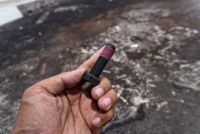
How to prevent screws from loosening? Loctite explains the difference between red and blue threadlockers, and helps finding the right threadlocker for you.
What’s the difference between red and blue Loctite threadlocker? ... Loctite threadlockers are primarily designed to prevent fasteners from leaking or loosening from vibration. The difference between red and blue threadlocker is a matter of strength and removability.For a hold that can be easily removed, Loctite Threadlocker Blue 242 is the hero. It’s perfect for motorized and nonmotorized parts that need occasional servicing, like car parts (oil pans, water pumps, etc), or even motorized yard equipment, bicycles, furniture and much more.For parts that need a more permanent hold, like structural bolts in a home, auto suspensions and frames, or any other heavy machinery, Loctite Threadlocker Red 271 is the answer. This industrial grade threadlocker packs a stronger punch than the blue and can only be removed by heating the parts to 500F.The application technique is the same for both red and blue Loctite threadlockers. Here’s what you do. Make sure nuts and bolts are clean and free from oil or dirt.
Varieties of the color blue may differ in hue, chroma (also called saturation, intensity, or colorfulness), or lightness (or value, tone, or brightness), or in two or three of these qualities. Variations in value are also called tints and shades, a tint being a blue or other hue mixed with ...
Varieties of the color blue may differ in hue, chroma (also called saturation, intensity, or colorfulness), or lightness (or value, tone, or brightness), or in two or three of these qualities. Variations in value are also called tints and shades, a tint being a blue or other hue mixed with white, a shade being mixed with black.The colour defined as blue in the RGB color model, X11 blue, is the most chromatic (colourful) blue that can be reproduced on a computer screen, and is the colour named blue in X11. It is one of the three primary colors used in the RGB colour space, along with red and green. The three additive primaries in the RGB colour system are the three colours of light chosen such as to provide the maximum gamut of colours that are capable of being represented on a computer or television set.This colour is also called color wheel blue. It is at 240 degrees on the HSV/HSL colour wheel, also known as the RGB colour wheel. It is a spectral colour which lies at, or near, the short-wavelength end of the traditional "blue" and possibly was classified as "indigo" by Newton.The color defined as blue in the NCS or Natural Color System is an azure-like color. The Natural Color System is a color system based on the four unique hues or psychological primary colors red, yellow, green, and blue.The Munsell color system is a color space that specifies colors based on three color dimensions: hue, value (lightness), and chroma (colorfulness), spaced uniformly (in terms of human perception) in three dimensions in the Munsell color solid. In order for all the colors to be spaced uniformly, it was found necessary to use a color wheel with five, non-arbitrary, equally spaced primary colors: red, yellow, green, blue, and purple.

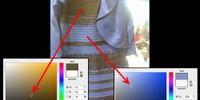
In February 2015, the viral illusion had viewers in a hot debate over whether the dress was black and blue or white and gold. Here's the science.
This story has been updated. It was originally published on February 26, 2016. Exactly eight years ago, the internet had a conniption over this image. Some people saw a blue and black dress, while others saw a white and gold dress.The blue bars are the same at the top, bottom, and middle but appear to change color (look darker) as your eyes move down the figure. A visual representation of the "dress effect." Courtesy of Andrew Stockman ... If you look at the bottom part of the figure, the overall appearance of the graded background (orange to brown to black bars) looks darker than when you look at the upper part of the figure.When you look directly at any part of the figure you can resolve the colored (orange to brown-blue) bars better than bars further away from where you are looking (because your ability to see fine chromatic detail drops quickly away from the center of vision).The visual system "fills in" the color of the background (assumed to be behind the blue bars in this case) from where you are looking across the whole background. When you look directly at the upper part of the figure, you can resolve the colored bars as orange-blue so the visual system tends to fill in the background as more orange.
Starting with the 2000 United States ... Democratic Party in blue states—in presidential and other statewide elections. By contrast, states where the predominant vote fluctuates between Democratic and Republican candidates are known as "swing states" or "purple states...
Starting with the 2000 United States presidential election, the terms "red state" and "blue state" have referred to US states whose voters vote predominantly for one party—the Republican Party in red states and the Democratic Party in blue states—in presidential and other statewide elections. By contrast, states where the predominant vote fluctuates between Democratic and Republican candidates are known as "swing states" or "purple states".All states contain both liberal and conservative voters (i.e., they are "purple") and only appear blue or red on the electoral map because of the winner-take-all system used by most states in the Electoral College.However, the perception of some states as "blue" and some as "red", based on plurality or majority support for either main party, was reinforced by a degree of partisan stability from election to election—from the 2016 presidential election to the 2020 presidential election, only five states changed "color"; and as of 2024, 35 out of 50 states have voted for the same party in every presidential election since the red-blue terminology was popularized in 2000, with only 15 having swung between the 2000 presidential election and the 2024 election.Later, in the 1888 presidential election, Grover Cleveland and Benjamin Harrison used maps that coded blue for the Republicans, the color perceived to represent the Union and "Lincoln's Party", and red for the Democrats. The parties themselves had no official colors, with candidates variously using either or both of the national color palette of red and blue (white being unsuitable for printed materials).That same year, a color supplement included with a July issue of The Washington Post used red for Republican-favoring states, blue for Democratic-favoring states, yellow for "doubtful" states and green for territories that did not have a presidential vote. The 21st-century association of colors in American politics is contrary to the long-standing conventions of political color in most other countries whereby red symbols (such as the red flag or red star) are associated with leftist politics including countries with such governments, such as Red China, whereas blue is associated with conservatism.

BluOr Bank - convenient, accessible and secure online financial services for private clients and business.
These cookies are used to determine the number of redirected cases from our partners’ websites. The information is necessary in order for the Bank to be able to execute the payments specified in the cooperation partners’ agreements for the services received.Various websites can place cookies in your browser in order to get information about your device and behaviour on the website.
